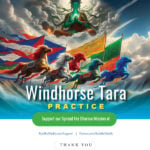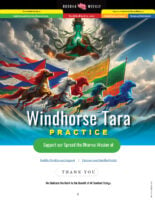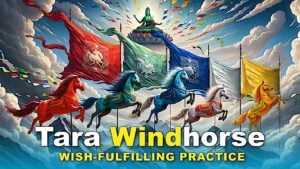Why is “lineage art” important? Distinguishing Nepali and Tibetan lineage Thangkas: style, media, symbolic differences, “fake” and genuine
Thangka sacred art is important to practicing Buddhists for meditation and devotion, but it is also a thriving collector marketplace. Contributing author Erica Gibson helps you identify the styles, media and source of Thangka art in this helpful how-to feature.
The Dalia Lama said, “All the elements of a Tibetan religious painting have a symbolic value. These symbols serve as aids to developing inner qualities on the spiritual path. The deities themselves are regarded as representing particular characteristics of enlightenment.”[1]
Editors Note: Since sacred art influences our practice, it is critical to be mindful when using or buying images that might be misleading or inaccurate. Mixing traditions or using images that carry different meanings can create obstacles for meditators. Dont’ confuse “lineage” with media. Today, modern digital thangka artists can create “lineage” Buddhist art if they are trained and dedicated practitioners.
Feature by Erica Gibson
[Bio at bottom of feature]
In the seventh century, a Chinese traveler visiting Kathmandu valley noted the following distinct characteristics of Nepali and Tibetan Thangkas:
Nepali artists never inscribed their name and identity on the Paubhas. They didn’t believe in personal recognition, rather believed in earning good karma instead. On the other hand, it was a standard practice for Tibetan Thangka artists to inscribe their names.

Nepal style influences
In Nepal, traditional Buddhist art adopted several Muslim and Rajput styles and techniques during the Malla period.
Tibet style influences
In Tibet, traditional Buddhist art adopted several Chinese styles and techniques (like the usage of silk, paper, calligraphy, and Chinese ink) during the eighteenth century.
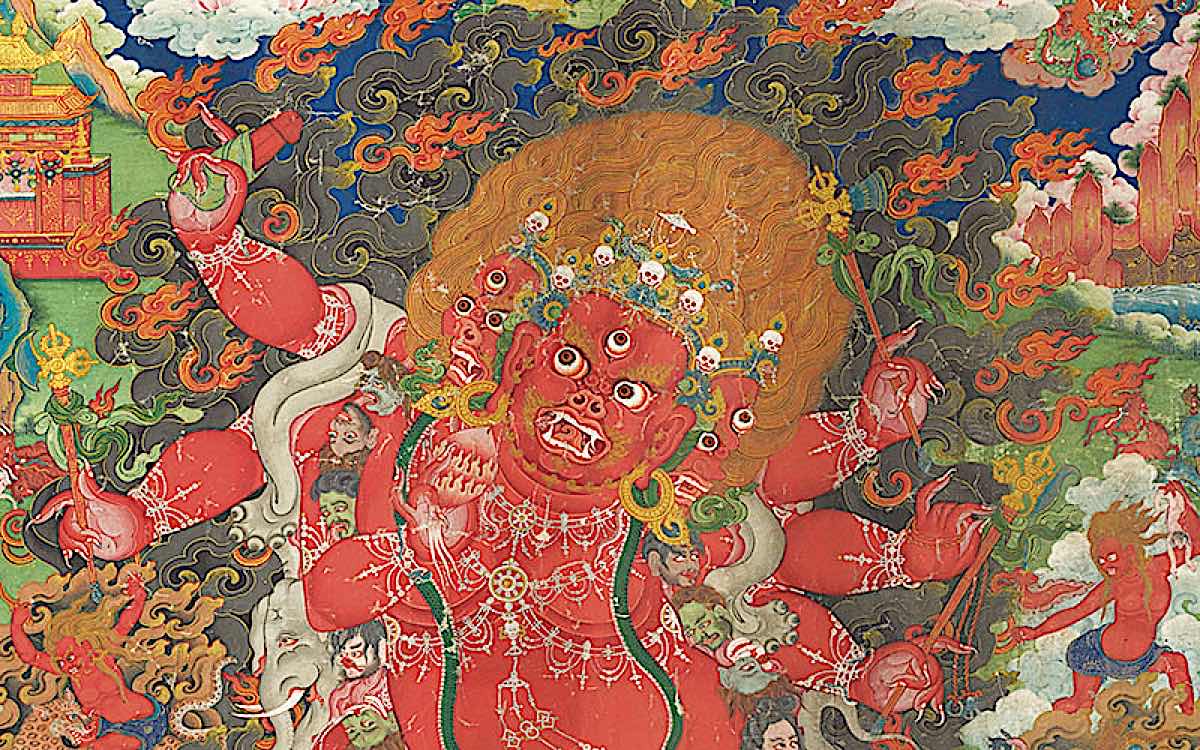
Distinguishing designs of Tibetan and Nepali Thangkas
Design and shapes
- Symmetrical shapes and designs, along with Buddhist symbols, signs, and gestures are typical features of Tibetan Thangkas.
- Nepali Thangkas portray ritual items and elements like a conch shell, vajra, Kalasa, Khadga, Lotus flower, sun, and swastika symbols.

Revered symbols
- Mythical creatures like Garuda and revered animals like lion, peacock, pair of fishes, elephant are pictured in Nepali Thangkas. Nepali Thangkas include images of Hindu cosmology such as Shiva, Parvati, Brahma, Visnu, Saraswati, Ganesha, etc.
- Tibetan Thangkas generally do not show images of other religions — although there are Enlightened Buddhist forms of Ganesha and so on.
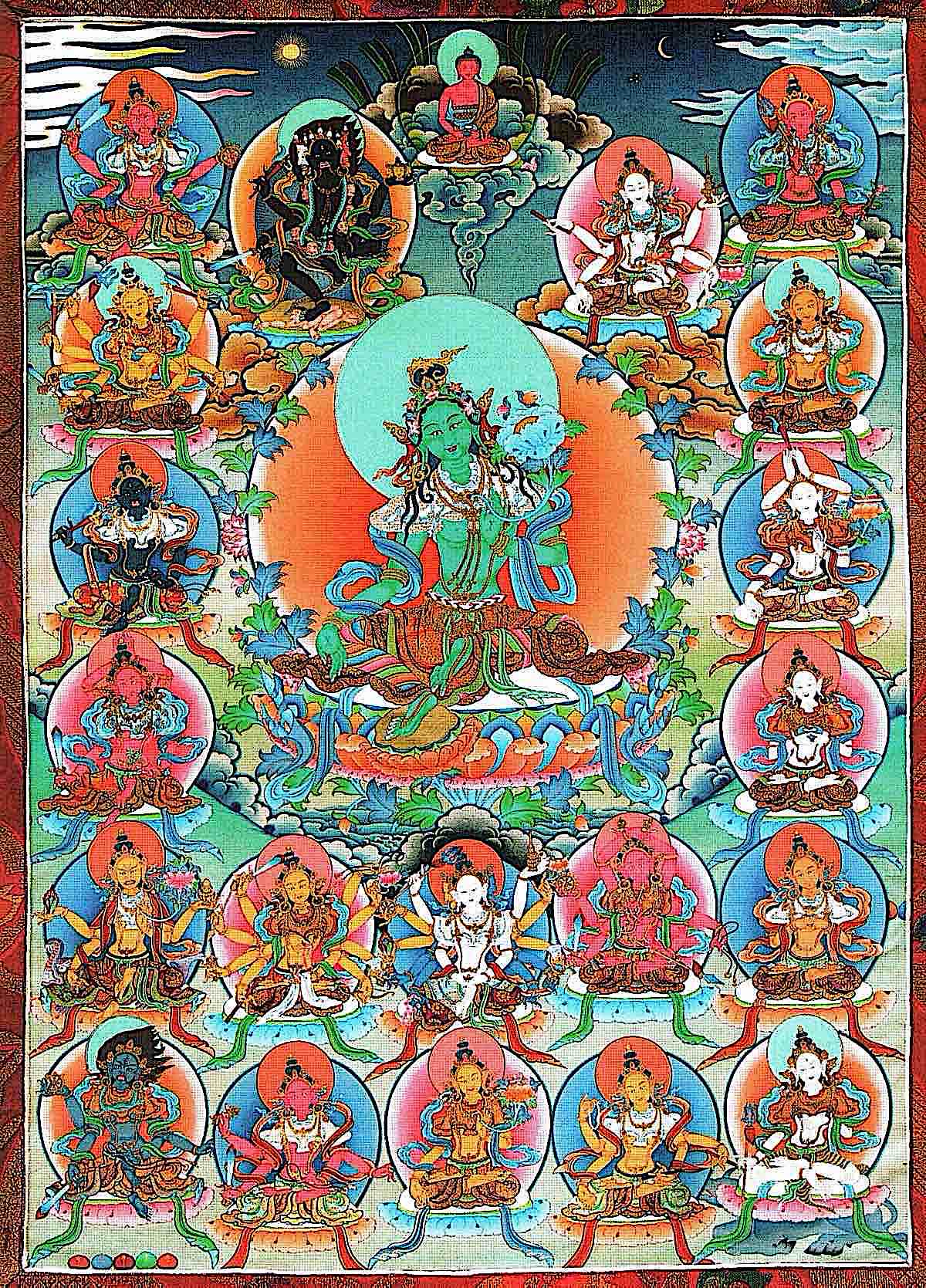
Materials
- Nepali Thangkas use a traditional cotton sheet for painting.
- Usage of Chinese silk fabric is common in Tibetan Thangkas.
Size
- Some Tibetan Thangkas can be gigantic in their sizes, big enough to cover an entire mountain.
- Nepali Thangkas are uniformed in sizes, generally ranging between 75 by 50 centimeters in size.
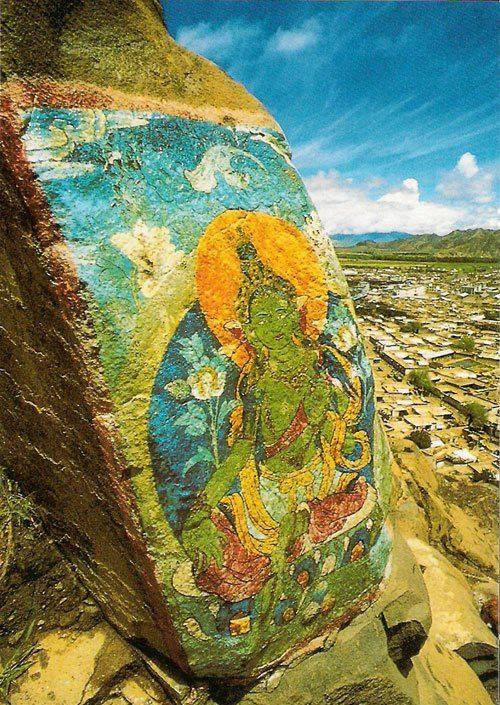
Colors
- Nepali Thangkas apply soft and warm colors to the paintings giving them a refined and serene appearance.
- Tibetan Thangka makers however apply bright and dark colors of red, giving the paintings a passionate and attention-grabbing appearance.

Traditional guidelines for artists
Thangka painters of Nepal were obliged to follow strict Buddhist techniques and rituals while making Thangkas. Certainly, in ancient times, it was traditional that they are renounced and initiated/trained by an enlightened guru. (Today, that is less common.)

Traditionally, it was prohibited to paint Thangkas afternoon. The last touch of the painter on the Thangka had to be the eye of the divine being, which is considered the most significant part of a Thangka. (Even today, typically, eyes are painted last.)
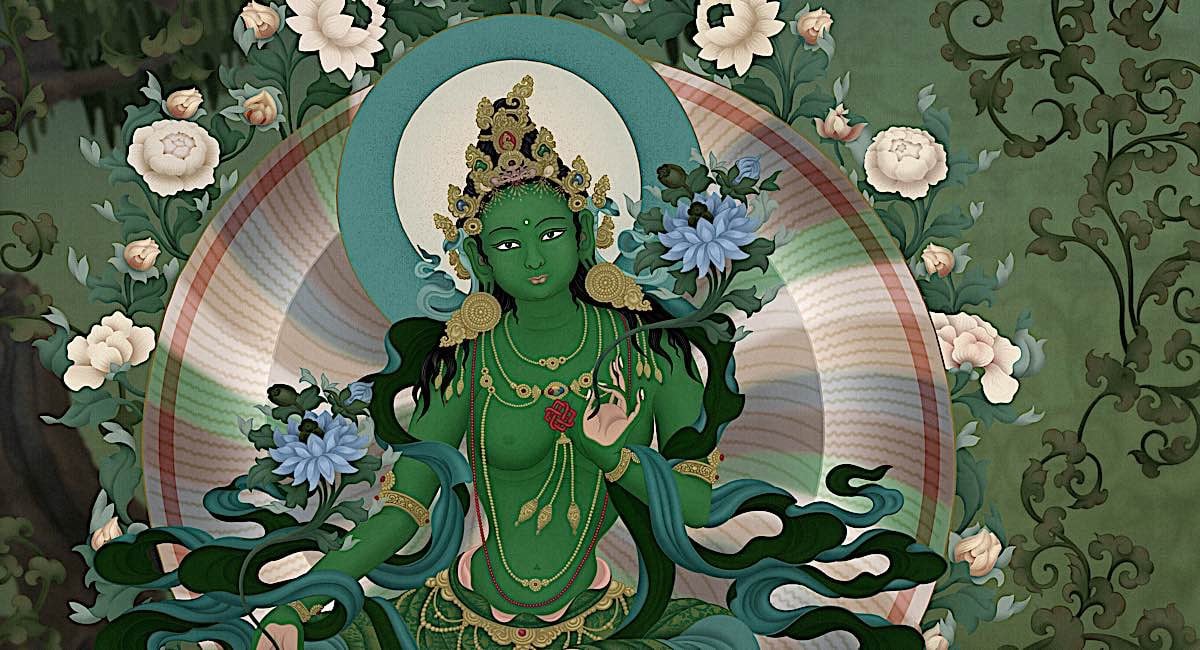
Tibetan Thangkas often feature images from Buddhist literature like Jataka tales and other legends. The images might also focus on themes like Buddha’s birth, enlightenment, preaching disciples, and both Sutra and Tantra images.
How to Identify a Tibetan Thangka
Fake or “real” matters more to collectors today, than to a practitioner. If this is a concern, be aware that many money-driven artists and retailers may not follow traditional guidelines or might distribute low-quality, fake inaccurate to sutra or tantra (or even, sometimes, images that could be considered spiritually damaging.
These types of images are sold to tourists, rather than genuine practitioners or collectors — although in today’s market, it is important to carefully examine provenance — and certainly image content.
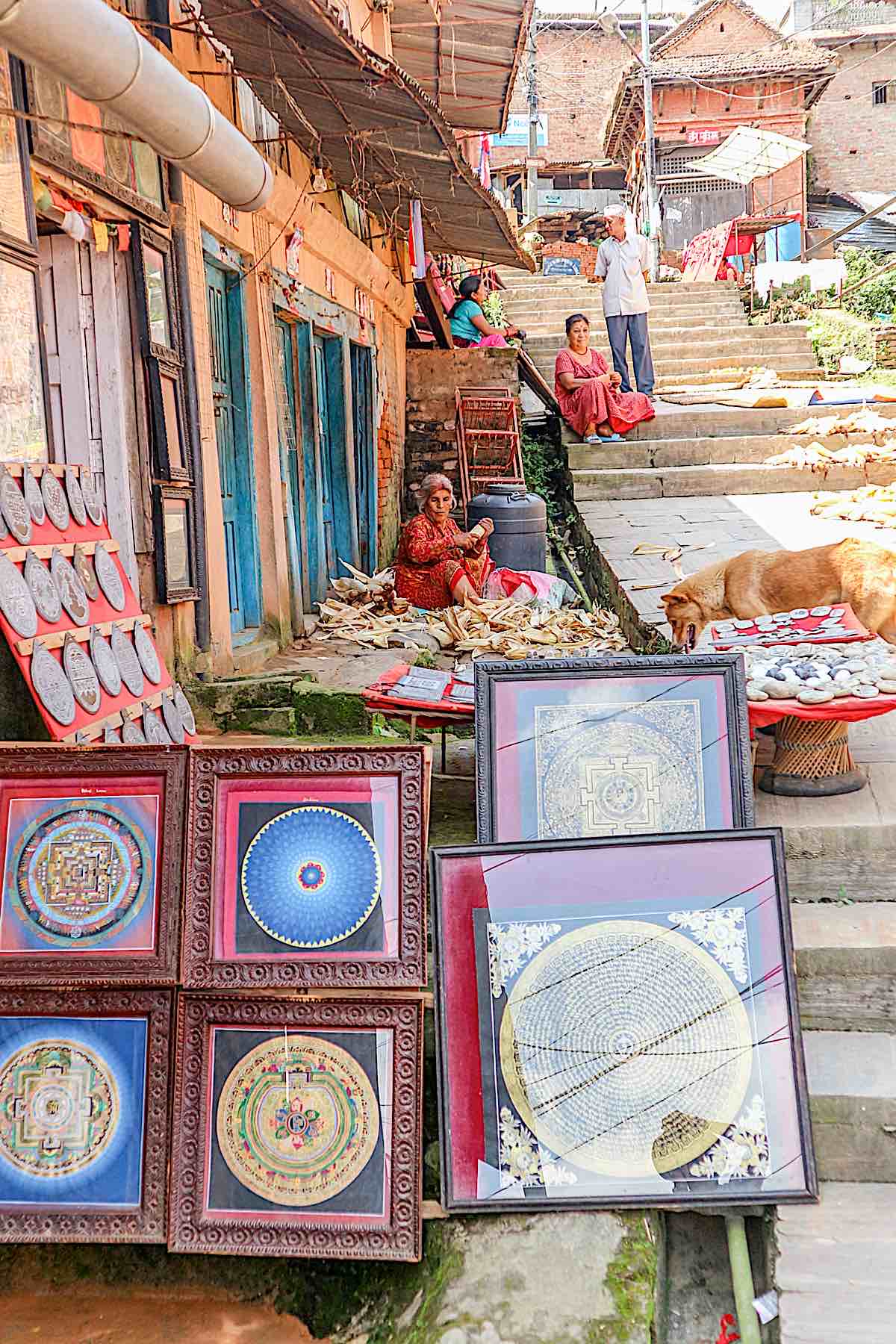
If you are a practitioner of lineage, Thangkas made without following the sacred methods or rituals do not represent the true essence of Buddhism — they are suited more as decorative art. These “copy” Thangkas are usually hastily painted by ill-trained individuals, copying previous art (with or without skill). As a result, the lineage of aesthetic beauty and sacred imagery of Thangka is compromised — and more, importantly, the religious significance is completely lost.
Diluting tradition: avoided the “fakes”
Tibetan spiritual leaders have condemned the making and marketing of such “fake” or “copy” Thangkas, referring to them as “causing degeneration of Buddhist art.” It is no different from mixing your spiritual practice with non-traditional methods. The diluting of tradition.
For a layman, fake and genuine Thangkas may appear similar. But under closer inspection from an expert, several defects and signs of poor quality becomes evident. The following points are helpful to identify genuine thangkas.
- An authentic Thangka must be geometrically graceful and balanced.
- Genuine Thangkas never permit the presentation of irreligious elements like secular political signs or arbitrary images and symbols.
- The quality of cutting and finishing must be fine. Any evidence of rough and hasty work is proof of fake.
Fake and counterfeit
If a painting appears to be “antique” with lineage, it is critical to check for “conterfeit.” Nowadays, many deceitful art sellers bake their “fake” Thangkas on butter oil lamps to give them a faded, old, antique look. So, if you sense butter oil odor on the surface of a Thangka, that is sure to be a counterfeit one.
- The sitting position of the Lord Buddha must be straightened and upright. Do not purchase if you detect the drooping position of the divine figures on the Thangkas.
- The shape of the divinity’s eyes in a genuine Thangka is always resembling that of a lotus flower.
- Genuine Thangka must have finely painted background color. Any evidence of uneven coloring is to be taken as a mark of a duplicate.
- Buddha and other divine beings portrayed on a Thangka should have evenly proportioned.
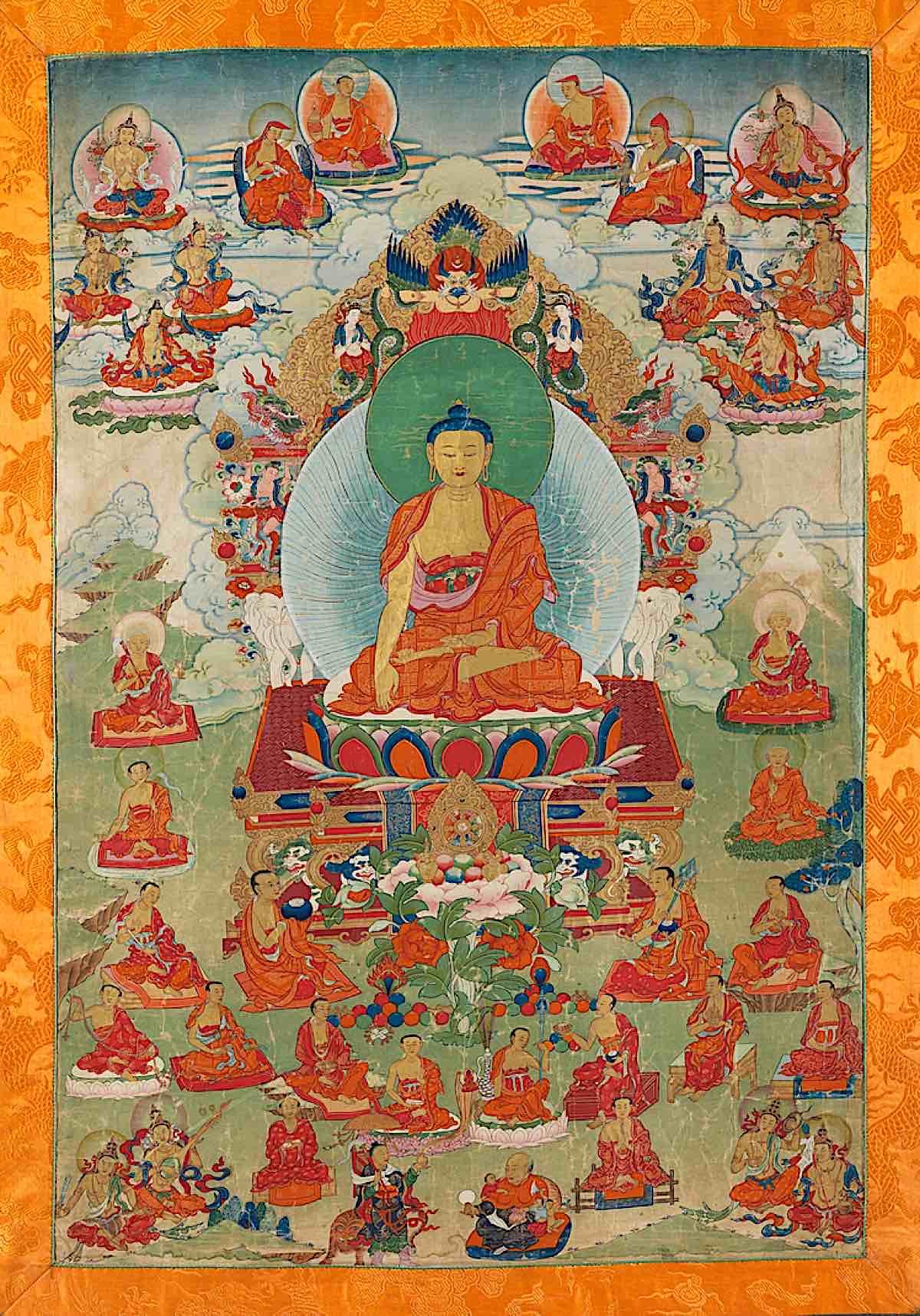
Various Types of Thangkas
Thangka can be categorized according to their Theme of art and according to their Material used.
According to the Theme of Art:
Palas
Nepali Thangka makers generally create this type. Palas portray deities of Hinduism and Buddhism with mythological beings in the background.
Mandala
Perhaps the purest and original of all Thangka types, Mandalas are symmetrical in a design representing the cosmos in many dimensions. The patterns are always geometric in shape. It doesn’t include any mythological figures, only symbols, gestures, signs, and lines are allowed to be drawn on a Thangka.

Garbha Dhatu (womb world)
This Thangka presents the universe in ascending order, starting from a single dimension and ending with the multi-dimensional universe. About Garbha Dhatu>>
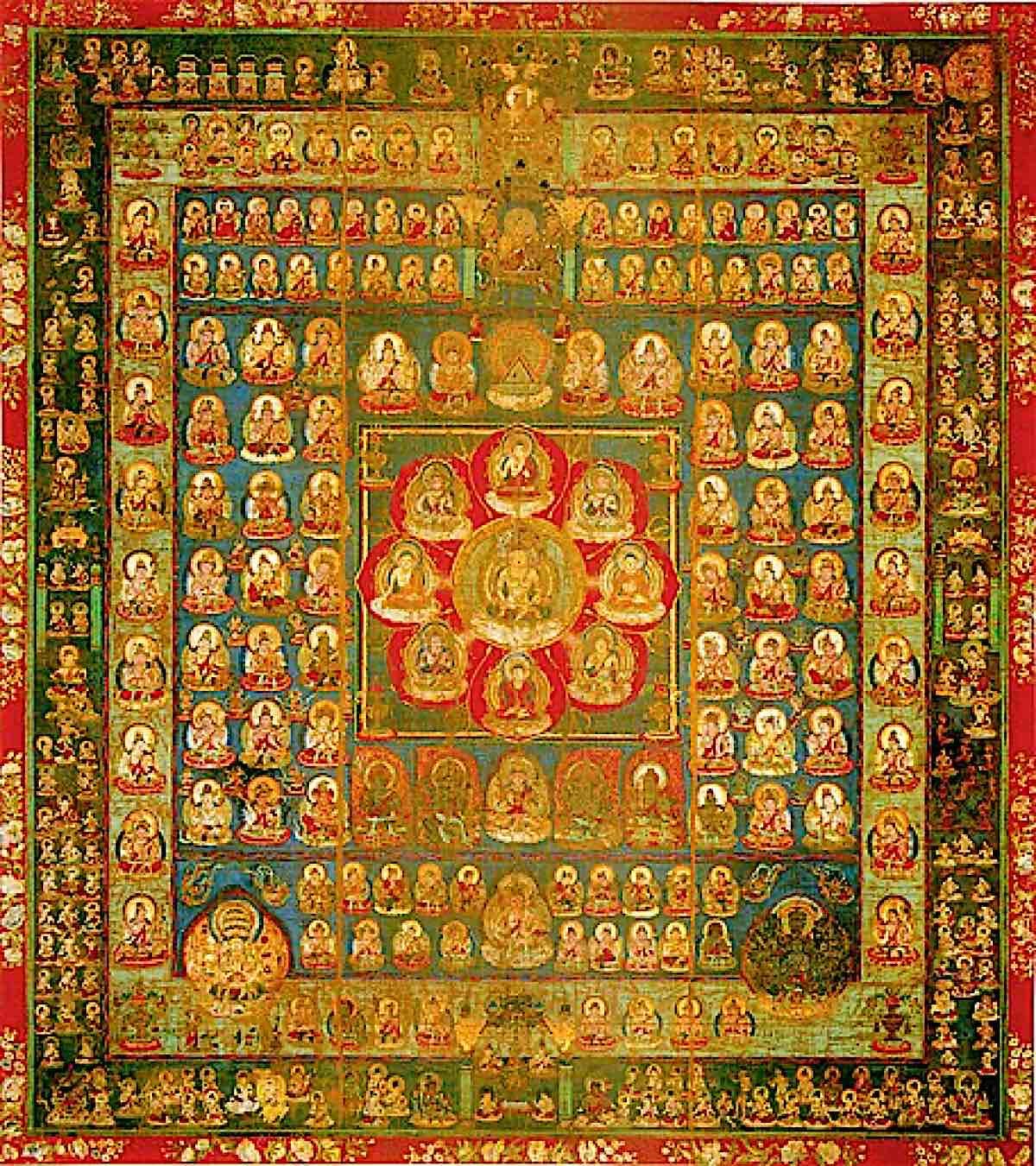
Vajra Dhatu (diamond world)
This Thangka presents the universe in descending order, starting from multidimensional and ending with a one-dimensional universe.
Paper scroll Thangka
These are the earliest form of Thangkas. Ancient Buddhist monks who traveled long distances between Nepal and Tibet carried paper scrolls containing religious scriptures and paintings. These scrolls were very light, portable, and could be rolled over easily. Paper scroll Thangkas played a pivotal role in the spread of Buddha’s message in those times. Few of those scrolls remain today because paper is a delicate material that cannot last for centuries.
Silk Thangka
Silk was first utilized in Tibetan Thangka when China occupied Tibet three centuries ago. Silk Thangkas are generally more costly than traditional cotton ones but are more durable and attractive as well.
Cotton Thangka
It is believed that the first Pata (ancient Thangka of India) was created on cotton fabric by artist Shariputra. Cotton Thangka is still considered as the purest and original form of Thangka by traditionalists.
Gold plated Thangka
Before the Chinese annexation of Tibet in 1959, thousands of gold-plated Thangkas existed in Tibetan monasteries. Sadly, almost all of them were sold to western private art collectors by Tibetan exiles after they immigrated to Nepal. Gold plated Thangka paintings are the most valued of all types of Thangkas, but they are no longer made for sale due to high expense.
Where Can You Buy Tibetan Thangka?
Tibetan Thangkas are now synonymous with traditional and genuine Thangka. But, ironic it seems, most Tibetan Thangkas are not created in Tibet. They are the product of Nepal. Nepal is the source of today’s Tibetan Thangkas. The artists of Kathmandu valley are worthy of full credit for preserving and developing this ancient Buddhist art. Not surprisingly the Thangkas made in Nepal are in great demand in Tibetan monasteries.
Kathmandu valley is home to hundreds of handicraft Manufacturers who possess a wide selection of locally made Thangkas, among other relics. Thamel, Basantapur, Patan Durbar Square, Bhaktapur Durbar Square, Durbarmarg, Indrachowk, etc are the top spots for Thangka shopping. If you are aware of all the bargaining, fraud, and time consumption related to purchasing handicrafts from retail shops, you could look to buy Thangka online.
Online options
Opting for online stores is more beneficial to you because of several advantages. Firstly, it is more efficient and time-saving. Secondly, you get to see a wide variety of items on display. Thirdly, there is less chance of being duped with overpriced or fake items. And the biggest advantage is that online Thangka stores provide wholesale services too. That means you receive attractive discounts if you buy Thangkas in bulk.
Thangka is an ideal example of Buddhist artistry and philosophy, a powerful source of meditative concentration, and a fine piece for adding Buddhist beauty to your private life. It can be a timeless and precious gift to a person you love, full of merit. Thangka is the epitome of timeless beauty and eternal truth.
NOTES
[1] Dalai Lama from the foreword of ‘The Mystical Arts of Tibet’
More articles by this author
Search
Latest Features
Please support the "Spread the Dharma" mission as one of our heroic Dharma Supporting Members, or with a one-time donation.
Please Help Support the “Spread the Dharma” Mission!

Be a part of the noble mission as a supporting member or a patron, or a volunteer contributor of content.
The power of Dharma to help sentient beings, in part, lies in ensuring access to Buddha’s precious Dharma — the mission of Buddha Weekly. We can’t do it without you!
A non-profit association since 2007, Buddha Weekly published many feature articles, videos, and, podcasts. Please consider supporting the mission to preserve and “Spread the Dharma." Your support as either a patron or a supporting member helps defray the high costs of producing quality Dharma content. Thank you! Learn more here, or become one of our super karma heroes on Patreon.
Erica Gibson
Author | Buddha Weekly
Erica R. Gibson is a content writer at writemyessaycheap. She is highly interested in keeping up with advancing technologies. In this case, she spends her spare time reading various blogs to obtain new knowledge and improve her professional skills.




